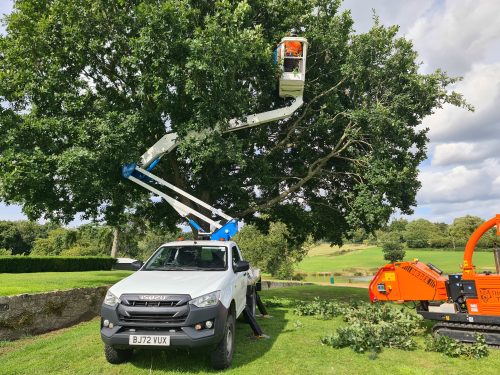 https://www.wilsontreesurgery.com/wp-content/uploads/2024/09/20230807_162313-500x375.jpg
https://www.wilsontreesurgery.com/wp-content/uploads/2024/09/20230807_162313-500x375.jpg
Machinery used in utility arboriculture
Read more
by Wilson Tree Surgery |
Trees engage in a remarkable form of communication, sharing information and resources through various channels.
Underground Networks: Trees form partnerships with fungi underground, exchanging nutrients for sugars. This mycorrhizal network connects trees, enabling them to share resources and information.
Chemical Signals: Trees release airborne chemicals to communicate distress or attract beneficial insects. This helps them coordinate responses to threats and maintain the health of the forest.
Root Connections: Trees intertwine their roots, creating networks for sharing water, nutrients, and information. Through electrical impulses, they signal soil conditions and support each other.
Recognising Kin: Trees can identify relatives and prioritise support for them. This cooperation ensures the survival of their genetic lineage and strengthens the forest community.
Adaptability and Resilience: By communicating and cooperating, trees demonstrate resilience in the face of challenges like droughts and pests. Their collective intelligence teaches us the importance of interconnectedness and cooperation.
In understanding how trees communicate, we gain insight into the intricate web of life in nature.
 https://www.wilsontreesurgery.com/wp-content/uploads/2024/09/20230807_162313-500x375.jpg
https://www.wilsontreesurgery.com/wp-content/uploads/2024/09/20230807_162313-500x375.jpg
Read more
 https://www.wilsontreesurgery.com/wp-content/uploads/2024/09/AdobeStock_475873508-500x333.jpeg
https://www.wilsontreesurgery.com/wp-content/uploads/2024/09/AdobeStock_475873508-500x333.jpeg
Read more
 https://www.wilsontreesurgery.com/wp-content/uploads/2024/09/pexels-valiphotos-589802-500x333.jpg
https://www.wilsontreesurgery.com/wp-content/uploads/2024/09/pexels-valiphotos-589802-500x333.jpg
Read more